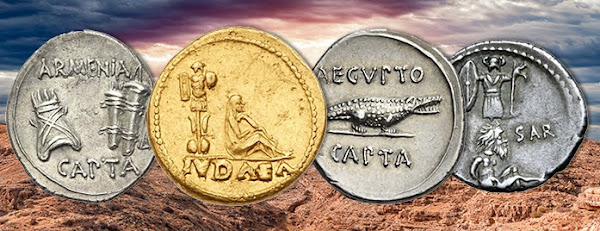Judaea Capta coinage was a series of commemorative coins originally issued by Vespasian to celebrate the capture of Judaea and the destruction of the Second Jewish revolt. Coins inscribed Ivdaea Capta (Judea Captured) were issued throughout the Empire.
 | The Great Revolt between the Romans and the Jews in 63 CE occured when Roman governor Gessius Florus looted the Second Temple. After the capture of Jerusalem, the last rebels committed suicide at Masada. In 69 CE, Galba, the governor of Hispania (Spain), rebelled against Nero and Rome saw the 'year of 4 emperors'. Vespasian levied the punitive Fiscus Judaicus tax against all five million of his Jewish subjects. |

Vespasian. AU Aureus (7.05 g), AD 69-79. ‘Judaea Capta’ type. | Vespasian then began striking vast numbers of Judaea Capta coins in all denominations. One element of the Judaea Capta imagery is a group of military trophies. Captured weapons and armor hung from a tree or post represents a military victory over the defeated enemy. |  |
See ----->
Masada




No comments:
Post a Comment